Fashion designers who like to paint their nails in a hurry often face the question of how to remove nail polish from clothes. Bright, persistent stain of not the most useful for tissue substances, very quickly dries up and risks becoming a permanent phenomenon. Act quickly. If you do not remove the formation before it dries completely, there is a risk of waiting for the pigment to penetrate the fibers of the material. Clear such residual phenomena will be almost impossible.
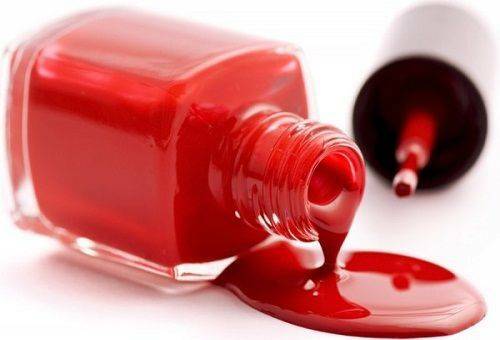
Regardless of the type of post-treatment, the preparatory stage should consist of the following manipulations:
- The trail is blotted with a cotton swab or a dry cloth, trying to collect the liquid to the maximum.
- We take a toothpick and with it we try to pull out the remnants of the product, which managed to consolidate between the fibers.
- The spoiled thing is spread on a solid horizontal surface, placing a flap of soft cotton cloth under the patch where the spot is located.
Before attempting to wipe off traces of lacquer from the fabric, it is recommended to check the product on an inconspicuous area of the product.
Methods for impact on natural fibers
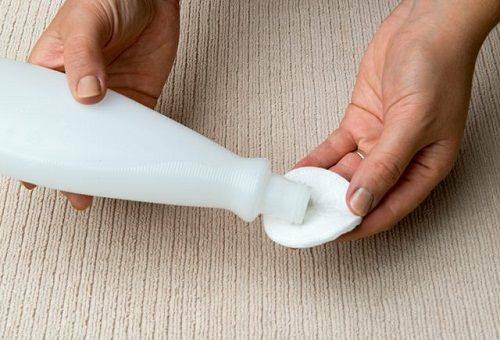
To remove nail polish from clothes made from cotton, linen or other natural fabric, much effort will not be needed. You just need to use one of the following techniques:
- Acetone treatment. The simplest and safest option of exposure. On the rest of the varnish we drip the solution of acetone, take the cotton pad and try to clean the surface with gentle movements. If the stain is gone, but there are obvious divorces, they need to be cleaned with gasoline and finally sprinkled with talcum powder.
- Chitka with gasoline. At the problem site, pour a little gasoline and leave for a quarter of an hour. Then we take a flap of matter and with intensive movements we try to erase the formation. To wash the stains we apply a little more liquid, again we wait and three.
Tip: If processing a garment made of white or light fabric, then it is recommended to add a little crushed chalk to the main component and leave until the mixture dries completely.
- Hydrogen Peroxide. Optimum and safe option for handling white things. Wet a 3% hydrogen peroxide rag cloth and gently three contaminated surface. Regularly change the working tool as it becomes dirty.
- Bleach. Another effective tool in combating stains from varnish on a white surface. The selected product by type of tissue is applied to the affected area and leave for a minimum of half an hour.
- White Spirit. Also gives a good result in a short time. The composition is plentifully applied to a rag flap, which for 15 minutes is applied to the spot.
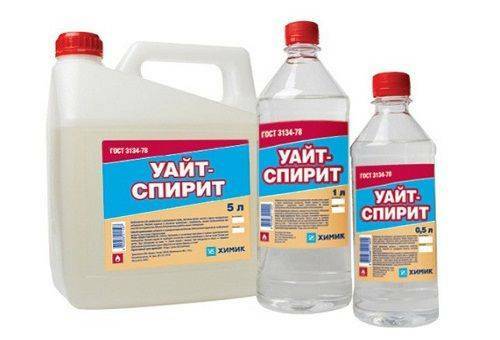
In order to finally wash the nail polish from the fabric it is necessary to drive the product in the washing machine one standard cycle. If the first approach to wash the stubborn stain could not or divorce appeared in its place, it is worthwhile to try again the same remedy or apply a suitable stain remover.
How quickly to wash synthetic and thin fabrics?
Remove traces of varnish from synthetic or delicate matter is not so simple. All listed methods for this purpose are not suitable, they will not remove the contamination to the end, but at the same time with a high probability of spoiling the garment.
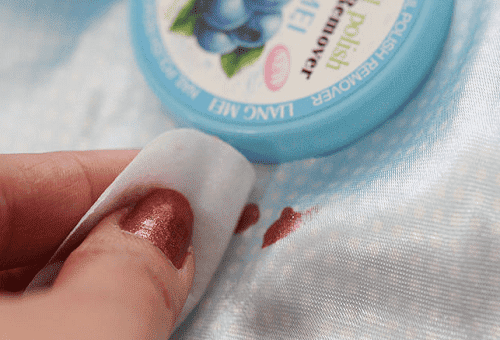
It is better not to take risks and take advantage of one of the following:
- Liquid for removing varnish without acetone. We put the composition on the stain, wait a few seconds and begin to rub the formation in one direction. If necessary, change the wadded disks, we work until the problem is completely eliminated.
- Homemade stain remover. Take a teaspoon of ammonia, turpentine and olive oil. Mix the constituents and apply abundantly to the problem area. Leave for no more than five minutes, we collect the mixture with a paper or rag cloth. Thing is erasing as usual. If the traces are still there, we make one more approach, but only after the product has completely dried up.
It is strictly forbidden to apply lacquer stains with acetic or citric acid. The result will be unpredictable, aggressive components can increase the stain resistance and add color to the brightness.
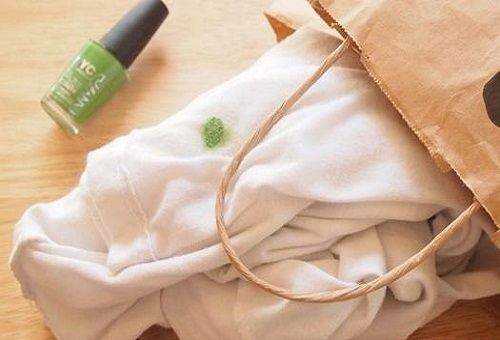
With woolen things that have a dense long pile, the lacquer stains can be cut. In this case, it is better to wait until the composition dries. The main thing is to turn the product with a stain downward so that the lacquer does not leak into the fibers.
If the above methods do not give the desired result, it is worth repeating the approach, slightly increasing the exposure time of the active components. In the absence of positive changes and after that, you will have to turn to professionals who will remove education with the help of more effective chemicals. In case of damage to the product from a very delicate fabric( for example, silk), it is better not to risk and immediately turn to dry cleaning.



